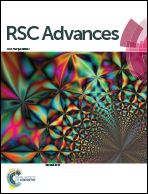Fabrication of porosity-controlled polyethylene terephthalate porous materials using a CO2-assisted polymer compression method
Abstract
The objective of this study is to fabricate porosity-controlled polyethylene terephthalate porous materials using a CO2-assisted polymer compression (CAPC) method. In a previous study, the CAPC method was used to fabricate porous polymer materials by compressing fabric sheets in the presence of CO2. However, the controllability of the porosity was not clear in the previous study. In this study, it is shown that the porosity of porous polymer materials could be easily controlled by adjusting the operating conditions of the CAPC method, using polyethylene terephthalate (PET) nonwoven fabric sheets. Using mercury porosimetry, a decrease in the porosity induced by compression accompanied by a decrease in the pore size is demonstrated. Scanning electron micrographs strongly indicate the plasticization of PET fibers by CO2.



 Please wait while we load your content...
Please wait while we load your content...